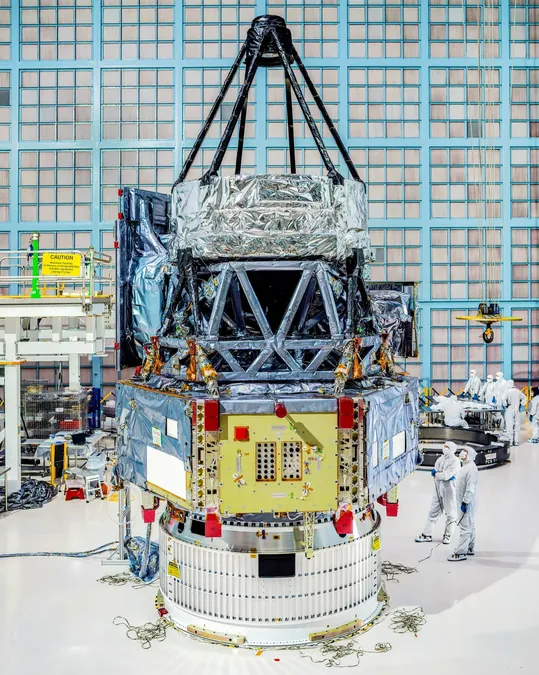
NASA's Nancy Grace Roman Space Telescope: A Giant Leap in Astronomical Exploration!
2025-01-08
Author: Jacques
Integration Milestone Achieved
In a groundbreaking development, technicians have successfully integrated the payload of NASA's Nancy Grace Roman Space Telescope. This impressive feat involves joining the telescope, instrument carrier, and two sophisticated instruments to the spacecraft that will propel this groundbreaking observatory into the vastness of space.
Excitement from NASA Officials
Mark Clampin, the acting deputy associate administrator for NASA's Science Mission Directorate in Washington, expressed his enthusiasm: “This incredible milestone keeps Roman on schedule for launch, bringing us a significant step closer to revealing the cosmos like never before. Watching the team’s progress during the integration phase has been fantastic, and I eagerly anticipate the transformative observations that Roman will provide.
Upcoming Rigorous Tests
Now that the space hardware is connected, it will undergo a series of rigorous tests to ensure optimal performance. The first test will confirm that every major component functions correctly when integrated with the rest of the observatory, before embarking on extensive environmental assessments. This will include simulations of electromagnetic, vibration, and thermal vacuum conditions that the payload will face during its launch and operational phase in orbit.
Ensuring Interoperability and Performance
NASA is prioritizing the hardware’s interoperability to prevent any issues between the components during operation. This entails verifying that communication antennas won't disrupt the observatory's other functions. Moreover, the assembly will be subjected to vibrations to guarantee its resilience during launch, and performance checks will be conducted under expected operational temperatures, along with adjustments to ensure the instruments and mirrors are precisely aligned optically.
Next Steps in Integration Process
As part of the integration process, Roman's deployable aperture cover will soon be attached to the outer barrel assembly. Additionally, solar panels are expected to be fitted before spring. By the fall, the structure will be fully assembled with the payload and spacecraft.
Mission Timeline and Expectations
The Roman mission is ambitiously slated for completion by fall 2026, with a launch targeted for no later than May 2027. When operational, the Roman Space Telescope is expected to revolutionize our understanding of the universe, from examining dark energy to discovering distant exoplanets. Stay tuned for updates as we edge closer to unveiling the secrets of the cosmos!



 Brasil (PT)
Brasil (PT)
 Canada (EN)
Canada (EN)
 Chile (ES)
Chile (ES)
 Česko (CS)
Česko (CS)
 대한민국 (KO)
대한민국 (KO)
 España (ES)
España (ES)
 France (FR)
France (FR)
 Hong Kong (EN)
Hong Kong (EN)
 Italia (IT)
Italia (IT)
 日本 (JA)
日本 (JA)
 Magyarország (HU)
Magyarország (HU)
 Norge (NO)
Norge (NO)
 Polska (PL)
Polska (PL)
 Schweiz (DE)
Schweiz (DE)
 Singapore (EN)
Singapore (EN)
 Sverige (SV)
Sverige (SV)
 Suomi (FI)
Suomi (FI)
 Türkiye (TR)
Türkiye (TR)
 الإمارات العربية المتحدة (AR)
الإمارات العربية المتحدة (AR)